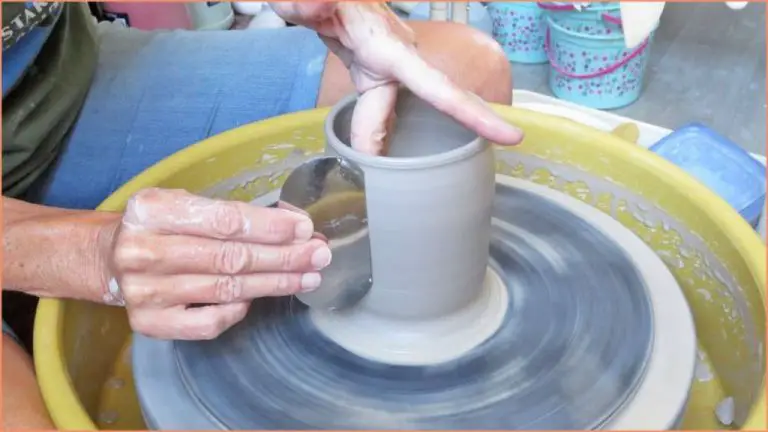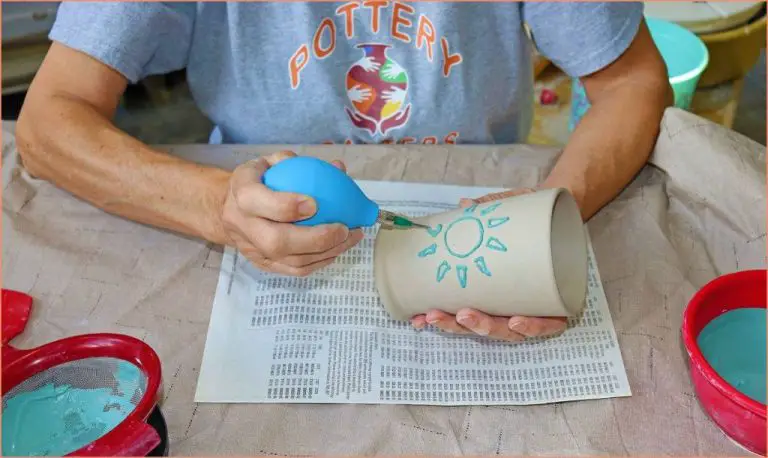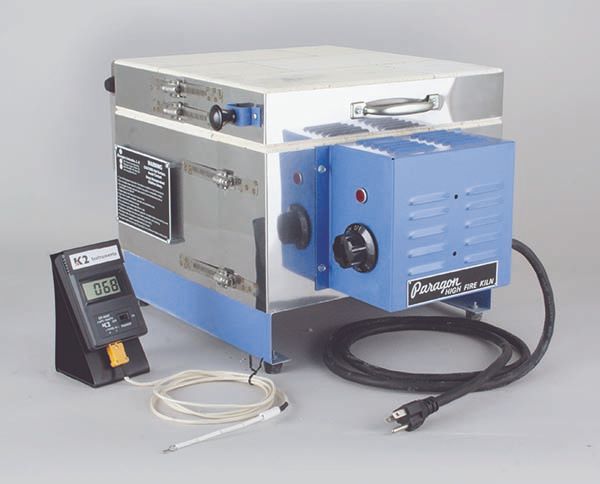How Do You Make Clay More Plastic?
Plasticity refers to the ability of clay to be shaped or molded without cracking or breaking apart. It describes how flexible and workable the clay is. Plasticity is one of the most important properties of clay for potters and ceramic artists.
High plasticity allows clay to be pushed, pulled, coiled, thrown on the wheel, and sculpted into intricate shapes and forms without becoming too brittle or dry. Clay with good plasticity will hold its shape during handling and drying without slumping or cracking. Plastic clay is smooth, flexible, and responsive to pressure, allowing artists to create detailed and complex pieces.
Low plasticity means clay is stiff, dry, and prone to cracking and breaking when worked. Clay with poor plasticity severely limits what artists can create without the clay fracturing. Ensuring high plasticity is essential for potters and sculptors to successfully shape ceramic artworks.
Adding Water
Water acts as a lubricant between clay particles, allowing them to slide over one another more easily. Adding water to clay makes the clay more plastic, flexible and workable. Water fills the spaces between the clay platelets, letting them move around each other without cracking or breaking apart. The optimal amount of water varies based on the type of clay, but generally 25-30% water content is a good starting point. Start by misting water over the clay then kneading it in until the clay feels smooth, soft and malleable without becoming sticky.
Too much water can make the clay too wet and sticky. On the other hand, not enough water will leave the clay stiff and crumbly. Finding the right moisture content is key for making the clay properly plastic. Test the plasticity by squeezing a small ball of clay in your hand. If it cracks or crumbles, it needs more water. If it sticks and smears on your hands, it has become too wet. With the right amount of water, the clay should smoothly mold into any shape without cracking or sticking.
Kneading the Clay
Kneading is a key technique for making clay more plastic and workable. The process of kneading involves repeatedly pushing, folding, and pressing the clay body. This mechanical action helps align the clay particles so they slide over one another more easily.
Kneading also enables water to fully penetrate into the clay body and disperse between the particles. When clay is first mixed, the water may only wet the outer surface. Working the clay compresses air pockets and allows the water to be incorporated throughout the entire mass. The more uniformly the water is distributed, the more plastic and malleable the clay becomes.
Kneading for an adequate duration allows strong bonds to form between clay particles due to increased molecular contact. This gives the clay plasticity, strength, and cohesiveness. The particles bind together yet still have enough freedom of movement to be shaped without cracking or crumbling.
Using Clay Plasticizers
Plasticizers are added to clay to increase its plasticity and workability. They help keep clay moist and flexible, allowing it to withstand handling without cracking or drying out. Common plasticizers used in clay bodies include oils, waxes, glycerin, and liquid polymers.
Oils such as linseed oil or mineral oil are effective plasticizers. As little as 5% oil mixed into the clay can improve plasticity. However, too much oil can prevent the clay from properly hardening in the kiln. Waxes like paraffin wax are also commonly used. Glycerin is a water-soluble plasticizer that helps the clay absorb moisture and remain flexible.
Liquid polymer additives work by binding water in the clay on a molecular level. They are especially useful for porcelain and stoneware clays that are not inherently plastic. Only small amounts of liquid polymer are needed to achieve a smooth, elastic clay consistency. Plasticizers are an important tool for potters and ceramic artists looking to improve the workability of their clay.
Storing Clay Properly
Proper storage is essential for maintaining the plasticity and workability of clay. Here are some tips for keeping your clay soft and pliable:
Wrap unused clay in plastic to prevent moisture loss. Clays like polymer clay and oil-based clays are especially prone to drying out. Securely wrap them in plastic wrap or place in a sealed plastic bag. Plastic prevents air exposure which causes the clay to lose its moisture.
Store clay in a cool place. Warm environments cause clay to dry out faster. Keep your unused clay in an area around 60-70°F if possible. Avoid hot spaces like near stoves, in direct sunlight, or in sheds. The cooler the storage, the longer the clay stays malleable.
Check clay periodically. Even when properly wrapped, clay can slowly lose elasticity over time. Occasionally knead stored clay to check its consistency. If it becomes crumbly, stiff, or cracked, it may require conditioning to restore plasticity.
With the right storage methods, your clay will maintain its soft, flexible sculpting properties for months at a time. Proper conditioning can even bring old clay back to a perfectly plastic state.
Avoiding Clay Dryness
Dry clay loses its plasticity. As clay dries out, the water evaporates and is absorbed into the air. Without sufficient moisture, the clay particles can no longer slide over one another easily, making the clay stiff and brittle. The plasticity is reduced as the clay hardens.
Remoistening dry clay may restore some plasticity. By adding water back into the clay, you reintroduce moisture to help lubricate between the clay particles. However, the clay may absorb water unevenly, leading to an inconsistent texture. Air pockets and cracks can also form if the clay dries out completely. For best results, keep clay properly sealed and stored to maintain even moisture content.
Using Smooth Clay
Smooth clays like kaolin are more plastic than coarse clays. This is because kaolin particles are plate-like which allows them to slide over one another when worked. Coarse clays have more irregular particle shapes that resist movement.
Adding smooth clays like kaolin to clay mixes is an easy way to increase plasticity. Even 10-20% kaolin blended into a coarse clay body dramatically improves workability. The kaolin fills in gaps between larger particles, lubricating the clay and making it more malleable.
Smooth clays are essential for throwing thin-walled pots on the wheel. They prevent cracking and tearing when pulling up vessel walls. Smooth clays also make handbuilding easier. Sculptures hold their shape without crumbling or sagging.
Look for smooth clays like kaolin, bentonite, or ball clay when purchasing clay. Adding 20% or more to a coarse stoneware or earthenware body will significantly enhance plasticity.
Removing Non Plastic Particles
Non-plastic materials in clay, like sand particles, can greatly reduce the clay’s plasticity. Screening or straining clay is an effective way to remove these non-plastic inclusions and improve plasticity.
Sand particles don’t bond with water molecules the same way clay particles do. So when present in clay, sand acts as an inert filler material that separates clay particles from each other. This obstructs the clay particles from sliding over one another, resulting in stiff, unworkable clay.
Passing wet clay through a sieve or strainer will remove most sand and other non-plastic particles. Typically a sieve mesh between 10-80 is used, depending on the size of particles needing removal. The strained water can then be left to settle so the clay particles precipitate out. This recovers most of the clay while discarding the non-plastic fraction.
Removing non-plastic particles enables the clay particles to pack together more tightly, vastly improving the clay’s plasticity and workability.
Choosing Optimal Firing Temperature
Firing temperature has a major impact on the plasticity of clay. Firing too low keeps clay in a more plastic state, while firing too high causes clay to become brittle and less plastic. This is because higher temperatures result in increased vitrification, which fuses clay particles together into a rigid matrix with less ability to bend and deform plastically.
Each clay type has an ideal firing range to achieve maximum plasticity without over-firing. For example, stoneware clays tend to reach optimal plasticity between 2,100°F and 2,300°F. Earthenware clays, which have lower plasticity, can be fired between 1,800°F and 2,000°F. Porcelain clays should be fired between 2,200°F and 2,400°F. Going above or below these ranges will reduce the clay’s plasticity.
Test firing small samples at different temperatures is the best way to pinpoint the optimal firing range for a specific clay body recipe. Close attention should be paid to clay properties like workability, bend strength, and vitrification level when assessing ideal firing temperatures for plasticity.
Conclusion
Improving the plasticity of clay is crucial for sculptors and potters to successfully shape their creations. There are several key ways covered in this article to make clay more malleable and plastic:
Adding water and kneading helps integrate moisture thoroughly into the clay. Using commercial clay plasticizers introduces oily substances that lubricate the clay particles. Storing clay properly prevents it from drying out and losing plasticity. Avoiding over-dryness in the first place also maintains clay workability. Choosing smooth, refined clay that is free of non-plastic particles or debris improves its plasticity. Firing at optimal temperatures sets the clay particles and structure without over-firing into a brittle, non-plastic state.
Plasticity allows clay to be flexible, stretchy, and responsive to an artist’s manipulations without cracking, crumbling, or becoming too sticky. The techniques described above give clay increased plasticity that enables potters and sculptors to successfully craft their artistic visions.



